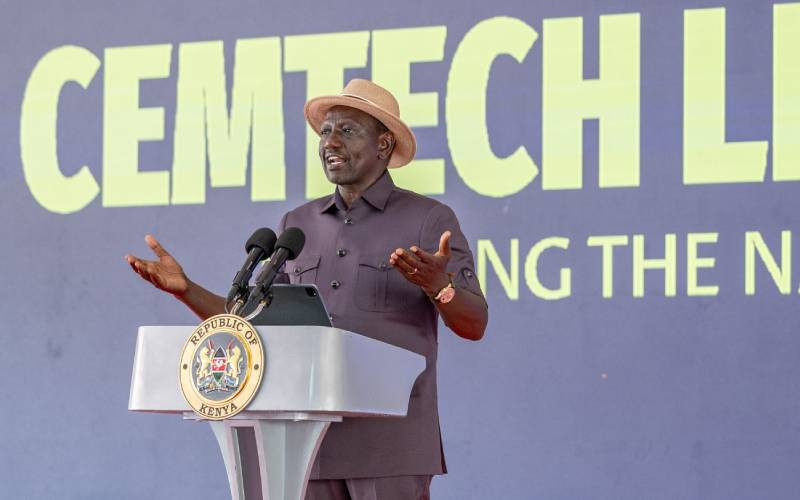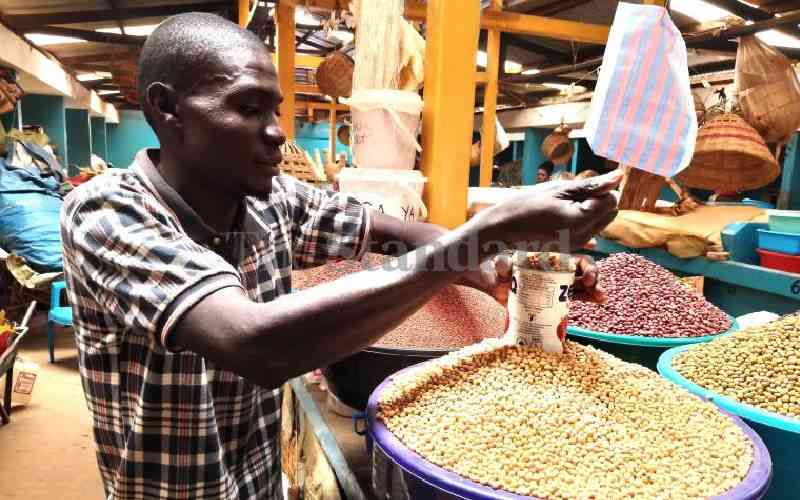When the Jubilee government came into power in 2013, it had big promises.
Kenya’s cement industry was considered one of the big winners as the regime announced a raft of mega-projects in its initial years.
Aside from the multi-billion Standard Gauge Railway (SGR) that would create demand for more than 150,000 tonnes of cement, the Government had pledged to build 10,000 kilometres of roads.
There was also a major stadium in each county and plans to overhaul the country’s port infrastructure with the construction of a second port.
At the same time, regional developments also provided an opportunity for Kenya’s cement producers to set up operations in other countries and transition from merely exporting to these nations.
The Lamu Port-South Sudan-Ethiopia Transport (Lapsset) Corridor and construction projects from South Sudan and Ethiopia promised new opportunities for manufacturers such as Athi River Mining (ARM) - one of the firms to venture into the region.
However, six years down the line, Kenyan cement manufacturers seem worse off, with reports of decline in revenue and erratic production across the major players.
This has left market analysts wondering if the sector is experiencing a temporary slump or is at the start of a familiar death experienced in Kenya’s sugar, coffee and pyrethrum sectors years ago.
Bamburi Cement, the largest by market share, last month reported a 72 per cent decline in operating profits - from Sh1.2 billion in the half-year ended June 2018 to Sh300 million recorded over a similar period this year.
The firm blamed the dip in earnings on expansion projects in the country and its subsidiaries in the region. “Higher depreciation charge following the commissioning of additional capacity expansion projects in both Kenya and Uganda mid last year impacted operating profit adversely,” explained the company in a statement accompanying the financial results.
“Additionally, the difficulty in accessing the Rwandan market has not only led to the loss of profit margin, but also to the need to impair associated assets in Rwanda,” the firm said.
Earlier this year, Bamburi’s Hima Cement was caught up in a diplomatic row between Rwanda and Uganda.
In April, authorities in Kigali blocked Hima Cement imports on grounds that they failed quality assurance tests after the 50kg packages were found to be two to three kilogrammes shy.
Aside from challenges from expanding into the region, other cement manufacturers are grappling with reconciling billions of legacy debts that threaten to bring down the once-profitable outfits.
In August this year, Kenya’s third-largest cement manufacturer, East African Portland Cement Company (EAPCC) announced it would be laying off its entire workforce in a restructuring programme.
Stay informed. Subscribe to our newsletter
In a memo to staff, EAPCC sought to have employees apply for jobs afresh, with the company hiring a lean staff to balance its running costs and current levels of productivity.
“As a result of the restructuring programme, all positions in the company will be declared redundant and the employees released,” said the firm’s acting Managing Director Stephen Nthei.
“Subsequently, all jobs will be reconfigured in terms of job consolidation and enrichment in line with the restructured and leaner organisation structure,” he said.
EAPCC later backtracked, saying it will “reconfigure” the roles of staff and retain 600 of its 1,000 staff based on a performance appraisal system.
EAPCC more than doubled its operating loss last year to Sh3.5 billion from Sh1.3 billion recorded in 2017.
The company further reported Sh5.1 billion in revenues against Sh5.2 billion in operating costs and another Sh3.2 billion in administrative costs.
In May, the company’s board fired Chief Executive Peter Nkeri while in the middle of executing
a turnaround strategy - less than three years after he had assumed office.
The woes of the State-controlled cement maker are compounded by decades-long court cases the firm says are instigated by private developers eyeing the firm’s Sh17 billion prime land. The company is currently negotiating the sale of part of its massive real estate holdings to stave off liquidation by KCB Group on account of a Sh5 billion debt.
Athi River Mining, the country’s second-largest cement producer by market share is similarly navigating financial and management turmoil that has made the future of the company uncertain.
The company’s owner, Pradeep Paunrana, is fighting a gruelling court battle with prospective liquidators looking to sell off the family-owned business to repay debts.
Earlier this month, Mr Paunrana was given less than a week to raise Sh1.3 billion, 20 per cent of the price offered for his firm in order to prevent the sale of ARM to a consortium of investors for Sh6.5 billion.
Paunrana also suffered a major setback after the court sided with the consortium in rejecting the Sh1.3 billion guarantee he had obtained from Diamond Trust Bank.
interest rate caps
This means ARM is now firmly on the auction block and the company’s Tanzanian subsidiary, Maweni Limestone Ltd, was last week sold to Chinese firm Huaxin Cement for Sh11.6 billion.
According to analysts at AIB Capital, the challenges facing large cement manufacturers in Kenya stem from slow demand in the real estate market and a glut of cement production.
AIB Capital says the interest rate caps introduced in 2016 have constrained the availability of credit going to the building and construction sector.
This can be deduced by the falling number of building approvals. “The number of real estate projects has decreased,” explains the financial advisory firm in a market report released last month.
“This is evidenced by a decrease in the value of building approval. In mid-2018 the value of building approvals issued had reduced to a low of Sh15 billion compared to a high of Sh28 billion in 2016.”
At the same time, ongoing expansion projects by four major cement manufacturers in the country are billed to expand and double capacity, depressing market share and sales for the already struggling companies.
“This will see the production rise from 13.2 million tonnes to 18.1 million metric tonnes,” says AIB Capital.
“However, with the consumption level being low at six million tonnes, accounting for only 45 per cent of the total capacity and cement distribution to Uganda and Tanzania declining, overcapacity is unavoidable.”
Mombasa Cement is finalising the construction of a mill with the capacity to produce 150 tonnes of cement per hour.
Savannah Cement is also installing a second 1.2 million tonnes per year mill.
However, cement makers are still banking on the State’s affordable housing project to drive consumption.
[email protected]
 The Standard Group Plc is a
multi-media organization with investments in media platforms spanning newspaper
print operations, television, radio broadcasting, digital and online services. The
Standard Group is recognized as a leading multi-media house in Kenya with a key
influence in matters of national and international interest.
The Standard Group Plc is a
multi-media organization with investments in media platforms spanning newspaper
print operations, television, radio broadcasting, digital and online services. The
Standard Group is recognized as a leading multi-media house in Kenya with a key
influence in matters of national and international interest.
 The Standard Group Plc is a
multi-media organization with investments in media platforms spanning newspaper
print operations, television, radio broadcasting, digital and online services. The
Standard Group is recognized as a leading multi-media house in Kenya with a key
influence in matters of national and international interest.
The Standard Group Plc is a
multi-media organization with investments in media platforms spanning newspaper
print operations, television, radio broadcasting, digital and online services. The
Standard Group is recognized as a leading multi-media house in Kenya with a key
influence in matters of national and international interest.








